The third day of Summer Institute began with a visit in Archives and Lu Xun’s Lecture Hall at Tohoku University. Following the farewell party, students gave their presentations at the Sendai Mediatheque.
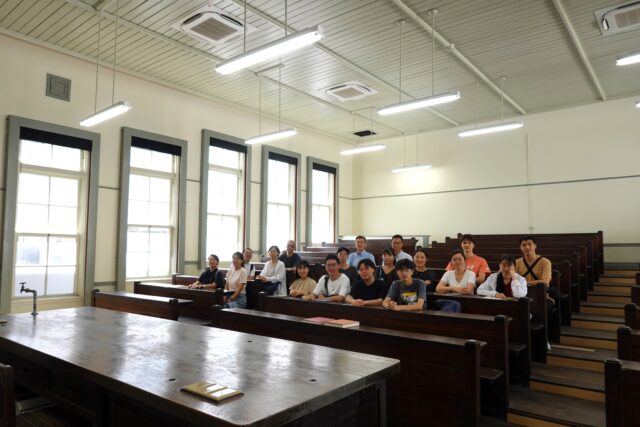
The presentation given by Group one (Maruyama Mai, Wakabayashi Manabu, and Ouyang Yafei) raised the question of how to develop a comparative perspective in analyzing modern civilization in China and Japan. They anchored their discussions in the contexts of natural environments, civil lives, and rapidly changing social realities in both societies.
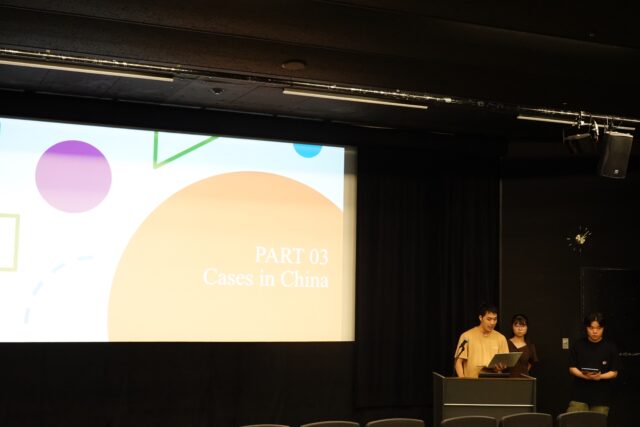
The presentation of Group two (Tani Shiori, Chen Leyan and Zheng Bowen) focused on the relationship between human and nature. They referred to the text Watsuji Tetsuro’s A Climate and the Chinese context of《真腊风土记》and examine different ways in which humans interact with nature under different climate conditions. After shifting from theoretical texts to empirical experiences, they further discussed how people in Japan have been coping with natural disasters such as the Tsunami.
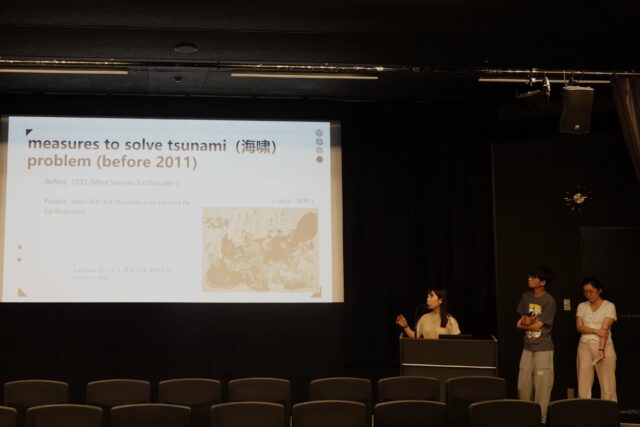
Reflecting on the field trip of September 2nd, Group three (Nakai Hiromoto, Xue Yi, Gu Binrui) gave the presentation titled “Disaster memory and post-disaster reconstruction.” They first touched upon the post-disaster life Sendai by discussing how people remember and mourn their loss that were buried in the vanishing town. Then, they raised the question about the social meanings of disaster memorializing, and discussed how disaster memorializing might socially, emotionally, affectively, and politically shape the ways people live in the present.
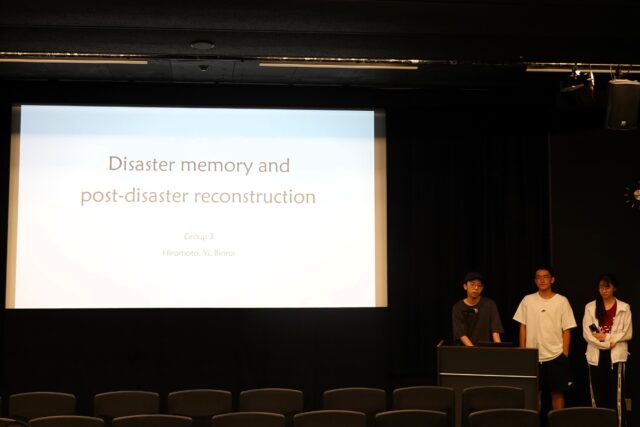
Group four (made up of Zhang Liaoliao, Koinuma Yoshimune, Binze Han) presented on the topic “Reconstruction of Fudo: Lessons from the 3.11 Great East Japan Earthquake.” They first compared the different notions of Fengtu (in Chinese) and Fudo (in Japanese). Then, group members reflected on the field trip of September 2nd, and discussed the reconstitution of Natori city in post-disaster period. Focusing on the notion of well-being, they discussed the importance of expanding post-disaster reconstruction from physical aspects to interpersonal networks, cultural and public life.
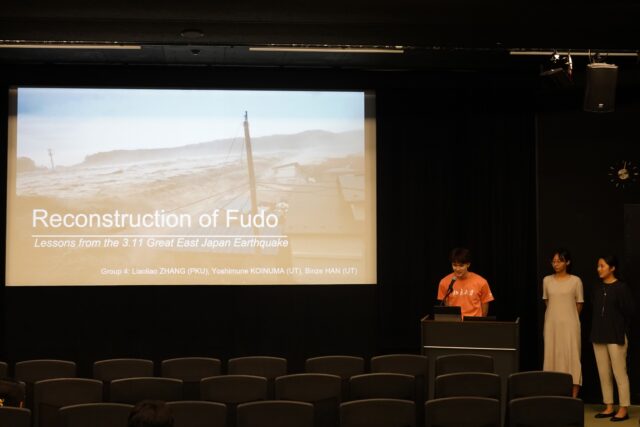
Reported by Li Jia (Ph.D. student, The University of Tokyo)
Photographed by LI Jia ((Ph.D. student, The University of Tokyo)








